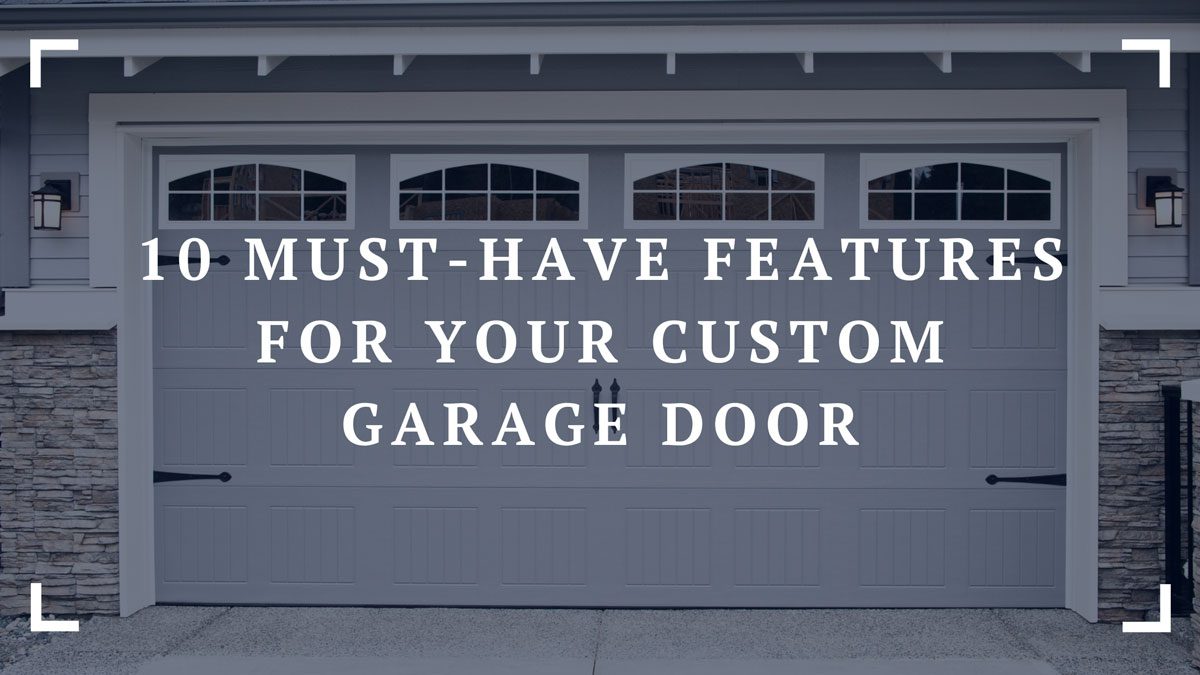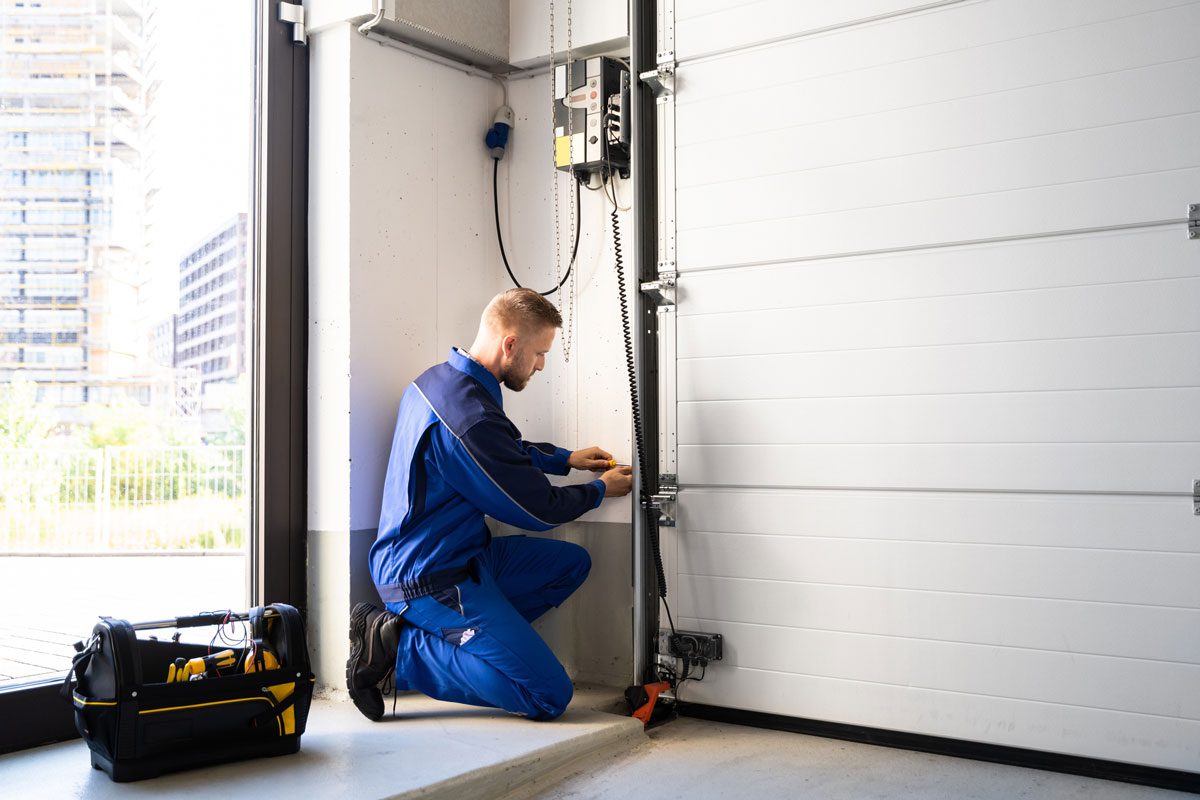A garage door isn’t just a mere entrance to your home or business; it’s a statement of style, safety, and functionality. Gone are the days when garage doors were purely utilitarian. Today, homeowners and business owners alike want doors that not only serve their primary function but also add aesthetic appeal and offer cutting-edge features.
As you contemplate upgrading or installing a new garage door, consider these ten must-have features that can make a difference.

1. Aesthetically Pleasing Design
The design of a garage door can reflect a homeowner’s personal style. Whether you’re drawn to a rustic wood finish or a contemporary frosted glass look, the design should seamlessly blend with the architecture of your house. For example, if you have a colonial-style home with red bricks, a unique garage door with decorative hardware and window panels would complement this architecture, giving it a cohesive look.
With several colors, textures, and patterns available, you can now customize your garage door, which extends your design aesthetic and gives your property a distinctive flair.
2. High-Quality Material
A door’s material impacts its lifespan, maintenance frequency, and appearance. For instance, wood, while elegant, might need frequent refinishing in humid climates, whereas steel, known for its strength, might resist dents better than aluminum. However, in coastal areas prone to salt and humidity, an aluminum garage door with a rust-resistant finish would be more durable than a traditional steel door.
Meanwhile, fiberglass can mimic the appearance of wood without the associated maintenance. It’s crucial to understand the characteristics of each material to choose one that suits both your aesthetic and practical needs.
3. Insulation And Energy Efficiency
Insulated garage doors, equipped with a core of polystyrene or polyurethane foam, aid in temperature regulation. They prevent the transfer of heat and cold from the outside, making interiors more comfortable and reducing energy bills.
Doors with higher R-values offer better insulation, which can be especially beneficial in regions with extreme temperatures. For example, if you’re a homeowner in Minnesota, you might choose a triple-layer garage door with a high R-value of 18.4 to keep your garage warm during harsh winters.
4. Advanced Security Features
With advancements in technology, garage doors have evolved to offer sophisticated security features. For instance, some doors come with tamper-resistant bottom brackets, reducing the risk of break-ins. Others may have lock mode settings, rendering remote controls inactive during vacations or long absences.
Moreover, you might want to consider a garage door equipped with a security system that automatically alerts you through a mobile app if someone attempts to forcibly open the door.
5. Smart Technology Integration
Today’s garage doors can integrate seamlessly with home automation systems. Features like real-time alerts when the door is left open, scheduling closing times, or even integrating with cameras to monitor activity empower you with information and control even when you are miles away.
For instance, there are apps that allow you to integrate your garage doors with smart home systems, enabling you to control the door via voice commands.
6. Safety Sensors
Installed at the base of a garage door, safety sensors use infrared technology to detect any obstructions. These sensors are a must-have, especially in homes with children and pets. They ensure that the garage door doesn’t inadvertently close when something or someone is in its path. For example, if your household has playful kids who often run around the garage area, infrared sensors could detect a toy left in the path of the door and immediately halt or reverse its motion.
7. Manual Override System
This system becomes invaluable during power outages. While automatic functions offer convenience, having the ability to manually operate your garage door ensures you’re never left stranded. For instance, during a prolonged power outage caused by a storm, you could easily switch your electronic garage door to manual mode, using a pull-cord system, ensuring you can still access your vehicle. Make sure your override system is easy to activate and revert.
8. Noise Reduction Mechanisms

Opting for belt-driven openers or dual-frequency technology can mitigate common causes of noisy operations. Additionally, nylon rollers, as opposed to metal ones, can reduce noise. For attached garages, especially those beneath bedrooms or living spaces, this feature is invaluable. For instance, if you’re living in an apartment complex with shared walls, choosing a belt-driven garage door opener with nylon rollers can significantly decrease noise, ensuring neighbors aren’t disturbed during late-night or early morning operations.
9. Durable Hardware Components
The moving parts of a garage door—springs, rollers, and tracks—endure constant wear and tear. Choosing components made from high-grade materials ensures smoother operations, fewer maintenance calls, and longer intervals between replacements. For example, for a heavy wooden door, torsion springs, which can handle more weight and last longer than their extension counterparts, would be the optimal choice.
10. Weather Seals And Thresholds
These components act as the first line of defense against external elements. Quality weather stripping around the door frame and a robust threshold at the bottom can prevent water, pests, and drafts from entering, thereby protecting both the garage and its contents. For instance, in areas prone to heavy rainfall, like Seattle, a garage door with robust rubber seals at the bottom would prevent water seepage, while brush seals on the sides keep out drafts and debris.
Conclusion
Choosing a garage door goes beyond selecting a design. By keeping these features available today in mind, you can make your door a true asset, combining style, functionality, safety, and convenience. As you contemplate the best features for your custom door, remember that the ideal door shouldn’t only enhance your property’s curb appeal but also cater to your unique needs and preferences.


